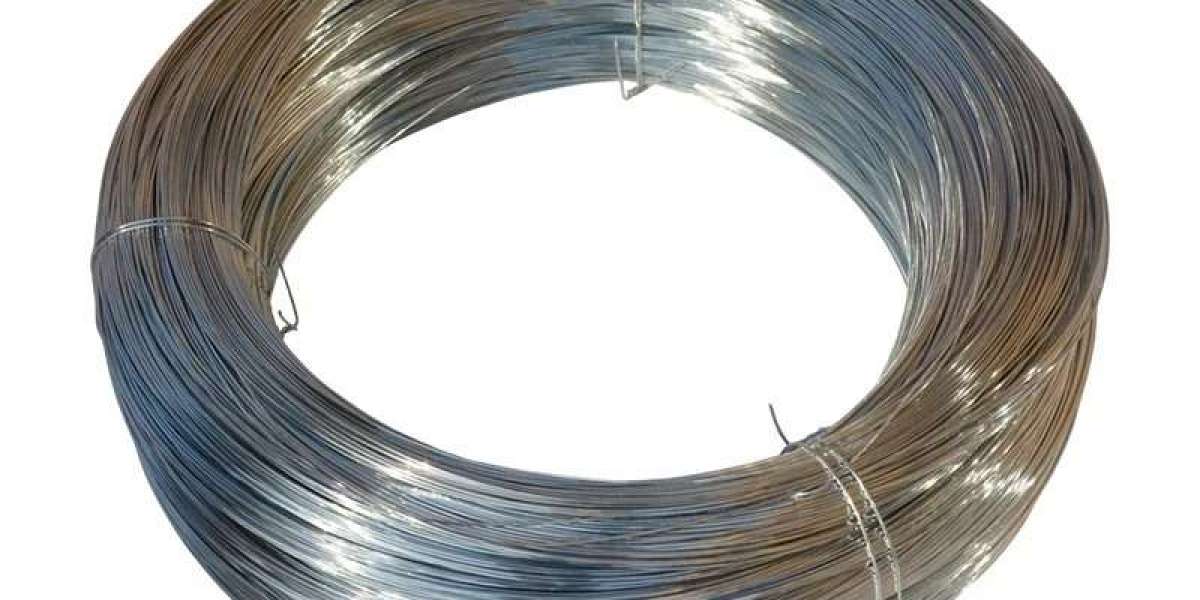Thread of Innovation: The Expanding Role of Metal Wire in Modern Industry and Design
From the framework of skyscrapers to the delicate strings of musical instruments, Metal Wire is one of the most quietly indispensable materials in human progress. It has been a backbone of construction, electronics, communication, and art—transforming in function and form with each technological leap. Though simple in appearance, metal wire is a highly engineered product that plays a critical role across multiple sectors.
This article explores the origins, types, applications, and modern innovations surrounding metal wire, shedding light on why this seemingly basic material continues to be a key player in shaping the industrial and creative world.
What is Metal Wire?
Metal wire is a slender, flexible thread or rod made by drawing metal through a die—a process that reduces its diameter while enhancing its strength. The result is a linear material that combines tensile strength, malleability, and conductivity, depending on the metal used and the purpose it serves.
Wire can be solid or stranded (made of multiple smaller wires twisted together), and it comes in a variety of forms such as:
- Round
- Flat
- Square
- Braided
Depending on its composition, metal wire can offer properties like electrical conductivity, corrosion resistance, heat tolerance, and mechanical durability.
A Historical Perspective
The history of metal wire dates back over 2,000 years, with early examples found in ancient Egypt and Rome, where gold and silver wires were used in jewelry and ornamentation. The industrial revolution brought wire-making into the mechanized age, making mass production feasible and consistent.
By the 19th and 20th centuries, metal wire had become foundational to everything from telegraph communication to suspension bridges, marking a turning point in its industrial relevance.
Types of Metal Wire
Different applications demand different wire characteristics. Here are some of the most commonly used types of metal wire:
1. Steel Wire
One of the strongest and most widely used types, steel wire is often galvanized or stainless to prevent rust. It’s used in construction, fencing, cable systems, and springs.
2. Copper Wire
Known for its superior electrical conductivity, copper wire is the standard in electrical wiring, motors, transformers, and telecommunications.
3. Aluminum Wire
Lighter than copper, aluminum wire is used in aerospace, automotive, and power transmission. It’s more economical and corrosion-resistant in certain conditions.
4. Brass and Bronze Wire
These are copper alloys used where both aesthetic and corrosion resistance are needed, such as in musical instruments, decorative arts, and precision equipment.
5. Nickel and Titanium Wire
Used in aerospace, medical implants, and high-temperature environments, these wires resist extreme conditions while maintaining structural integrity.
Industrial and Commercial Applications
1. Electrical and Electronics
Metal wire—especially copper—is essential in creating electrical circuits, wiring systems, and signal transmission. Fine wires are used in circuit boards, while thicker wires power homes and cities.
2. Construction
Steel wire is used for rebar ties, suspension cables, fencing, scaffolding, and mesh reinforcement. Its strength and durability make it indispensable in large-scale infrastructure.
3. Telecommunications
In telephone lines, fiber optic shielding, and data cables, metal wire ensures signal strength and shielding from electromagnetic interference.
4. Manufacturing
Springs, fasteners, chains, cutting tools, and welding rods all rely on the specific properties of metal wire, tailored to their use through alloy selection and heat treatment.
5. Medical Industry
Titanium and stainless steel wire are used in orthopedic implants, dental braces, stents, and surgical tools. Their biocompatibility and strength are crucial in health care.
6. Automotive and Aerospace
High-strength metal wires are used in cables, sensors, harnesses, and structural reinforcements, where performance and reliability are mission-critical.
Metal Wire in Art and Design
Beyond industrial applications, metal wire is a favorite medium in fine arts, jewelry, and interior design. Artists sculpt wire into forms that range from minimalist line figures to intricate wire-wrapped jewelry. Interior designers use metal wire for light fixtures, furniture frames, and decorative panels, blending industrial chic with elegance.
Wire art allows for the creation of form through emptiness, offering transparency, movement, and lightness while still evoking strength.
Environmental and Economic Considerations
Metal wire, like other industrial materials, carries environmental impact—especially in extraction and manufacturing. However, it is also highly recyclable. Copper, aluminum, and steel wires are often reclaimed, melted, and re-drawn into new products without significant loss in performance.
Recycling metal wire:
- Reduces mining impact
- Saves energy
- Decreases landfill waste
- Cuts down greenhouse gas emissions
The increasing shift toward sustainable engineering and green building is pushing manufacturers to use more recycled content, develop eco-friendly coatings, and invest in energy-efficient production techniques.
Innovations in Wire Technology
Modern advancements in materials science and nanotechnology are pushing wire capabilities to new heights:
- Superconducting wire: Used in MRI machines, maglev trains, and quantum computing, this wire can carry electricity with zero resistance under specific conditions.
- Memory wire: Used in medical and robotics applications, it returns to its original shape after deformation.
- Smart wire sensors: Embedded with microchips and conductive polymers for real-time data tracking in structural health monitoring.
- Nano-wire: Ultra-thin wires used in cutting-edge electronics, solar panels, and biotechnology.
These innovations are unlocking possibilities in healthcare, energy, communication, and automation that would have been unthinkable just a few decades ago.
Challenges in Metal Wire Usage
Despite its benefits, working with metal wire presents some challenges:
- Corrosion and oxidation in unprotected wires can limit lifespan.
- Fatigue failure due to repeated bending or stress.
- Installation hazards such as cuts, snaps, and electrical shocks.
To counter these issues, manufacturers apply protective coatings like zinc (galvanizing), PVC, or epoxy, and offer wire in spools, coils, or straight lengths based on safety and handling requirements.
Conclusion: A Wire That Connects the World
From massive bridges to the tiniest electronic circuits, metal wire continues to thread its way through the fabric of human innovation. It binds, conducts, supports, and beautifies—often without drawing attention to itself.
In today’s fast-moving world, the role of metal wire has never been more important. As we continue to innovate in smart technologies, green energy, and sustainable design, metal wire will remain at the heart of progress—a simple strand with the power to hold entire systems together.
Whether hidden behind walls or shining as a centerpiece, metal wire is the quiet connector that builds and binds our modern world. Click here to view more details https://www.stwiremesh.com/



